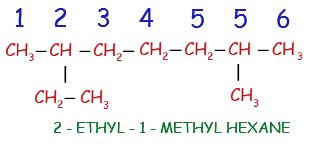IUPAC is the International Union of the Pure and Applied Chemistry nomenclature, that is used as the naming scheme. It provides consistency to the names and gives a unique name to each compound which otherwise is not possible if the common names are used.
In the chemical nomenclature, it is the systematic method for giving names to the organic compounds. IUPAC nomenclature is published in the Blue Book of the nomenclature of organic chemistry. Ideally, each possible organic compound should have a name that in turn is helpful to create an unambiguous structural formula. Even for the inorganic chemistry, there is an IUPAC nomenclature. In normal communications for avoiding the tedious and long names, the naming recommendations from the official IUPAC are not practiced or followed but it is followed when it is necessary to give absolute and unambiguous definition to the compounds. Sometimes, the IUPAC names are simpler than the older names as ethanol name is used instead of ethyl alcohol.

Nowadays the number of known organic compounds has been increased largely and as a matter of fact these compounds are just the isomers of the other compounds such as there are 5 hexanes, 3 pentanes, 18 octanes, and 9 heptanes, so, a systematic nomenclature must be followed for their naming and identification.
The nomenclature system of IUPAC is the set of certain rules which was devised and used by the organic chemists to circumvent the problems caused by the arbitrary nomenclature system. There are some rules which should be followed to give names to organic compounds according to IUPAC. Few basic names should be memorized before naming the organic compounds. Generally, the base part of the names is reflecting the number of carbon atoms in what one has to assign to the parent chain. The type of the functional group present in the parent chain is represented by the suffix and the other groups which are attached to the parent chain are called substituents.
By knowing the IUPAC rules and the given structural formula, a unique name for each of the organic compound can be written by anyone. In general, there are three distinct features for naming according to the IUPAC rules.
- A base or the root indicates the major ring or chain of the carbon atoms present in the molecular structure.
- The suffix or the other elements that designate the functional groups which may be present in the compounds.
- The names of the substituent groups other than the hydrogen which completes the molecular structure of the organic compounds.
For naming the organic compounds according to the IUPAC rules, generally requires the four pieces of the information such as recognition and prioritizing the functional group that is present in the compound, identification and numbering of the longest carbon chain to give the lowest possible numbers to the highest ranking groups, citing the substituents alphabetically by using the earlier determined numbering, and recognizing and classifying any of the stereochemistry. This format is applied to all the organic compounds.